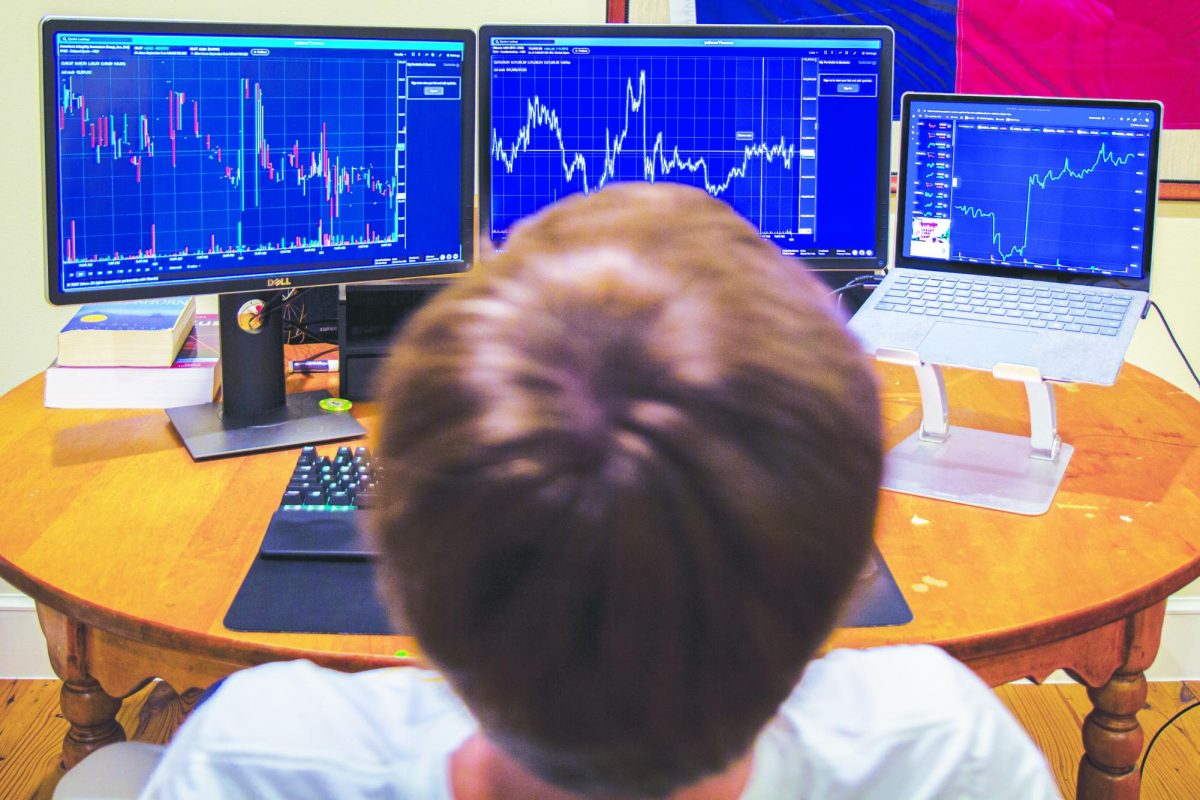He was exhausted. He’d skied for the entire day. Cycled 50 miles on the Peloton. Lifted weights late into the night. And now, he had finally done it.
Looking down at his Apple Watch, junior Henry Sun saw his daily health statistics blink onto the screen. His activity rings were completely filled out, but more importantly, he now had the top spot among his group of friends.
He smiled, and then promptly fell asleep.
Sun and his friends are part of an ever-increasing group of athletes who dedicate their attention to accumulating high activity scores based on metrics set by digital workout trackers, such as the Apple Watch or the Fitbit.
Known as the “gamification” of fitness, the phenomenon has been controversial.
Some studies have shown a positive correlation between the usage of the devices and average time spent exercising; other studies, however, have also shown that the calorie tracking features can be frequently inaccurate.
While critics argue that elaborate designs and fancy user interfaces make no real long term impact on an individual’s health, Sun is optimistic that these features will attract people to the devices and, in turn, help them develop healthy habits.
“If it helps people get more educated about working out and get more motivated, I think that’s a very good thing,” Sun said.
Sun has found certain metrics on the device that make tracking workout performance easier. Tracking heart rate zones while running, for example, gives him a range of target output he can measure, helping him to gauge the strain of his runs. Sun also has used the active calorie measurement, an estimation of the calories burned each day through physical activity, to help him safely cut weight during wrestling season.
After a little experience using the device to track performance in various workouts and guided activities, Sun believes that users will have enough knowledge to stay fit on their own.
“Once you get to higher levels, you don’t really lose interest in keeping up with the statistics,” Sun said. “You just don’t really need it anymore because you already know you can finish your workout and know you did it well.”
Sun stopped using his Apple Watch in the spring of 2022, at the start of baseball season, after realizing it was hard to keep track of his fitness data when he couldn’t wear the device while playing.
Sun tested out an alternative fitness tracker, the Whoop, a screenless device providing data to a user’s mobile phone with measurements of physical strain, sleep performance and recovery data.
“Having used both,” Sun said, “the Whoop is definitely more geared towards athletes that are in sports. I would wear it during wrestling because I could wear it on my ankle. If you wear it on your ankle, there’s really not a sport you can’t do.”
This ability to track data during any kind of physical activity makes the Whoop a popular tracker for all kinds of athletes. But for Sun, the Apple Watch just makes things easier when he’s not playing a sport, leading him back to his original device.
“It gives you a lot more insight into things and makes tracking your workouts and looking at all the information a lot easier,” Sun said. “I think that the Apple Watch interface and the user experience is a lot better.”
During his daily morning runs, chemistry instructor and Middle School cross country and track coach Dr. Jonathan Moody uses tracking watches to log his mileage, heart rate and calories, though he doesn’t always use the data.
“I’ve always had some version of a Garmin,” Moody said. “I actually use a different heart monitor that has a strap on my forearm, however, because sometimes, when you’re running, the watch can start picking up your cadence, and then the report will jump up. Also, when they tell you how many calories you’ve burned, it’s just an estimation, but it’s still nice to have some information like that.”
Moody believes that the tracking devices can be helpful, though he recognizes the dangers of being overdependent on the numbers they show.
“If you know how fit you are but you’re just having a bad day in a workout, sometimes athletes will push harder than they should just because they look down at their tracking device and it tells them that they’re going slower than they normally would,” Moody said. “So even though I have my watch on the whole time I’m running, I often won’t look down for miles at a time.”
If he knows an athlete is prone to being distracted or comparing themselves to others, Moody tells them to try exercising without the watch.
“In all aspects of social media these days, we’re constantly bombarded with what someone else looks like or what someone else wears or buys, and a lot of people have this, almost irresistible, urge to go, ‘I want that’ or ‘I want to do that,’” Moody said. “That can extend to training as well. If you see a guy that beats you in a race, and then you start seeing what his workouts are, it’s not always safe to assume that you should do the same workouts as him. And even if you do the same workouts the same way, you still might not be as good or be able to beat him.”













